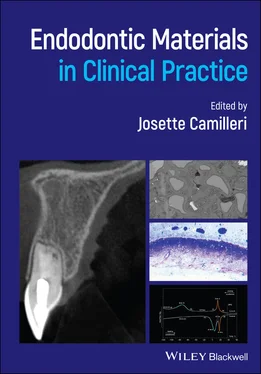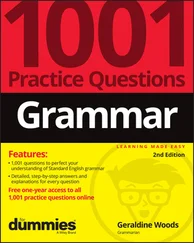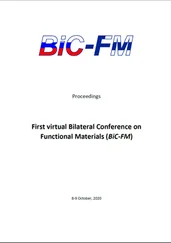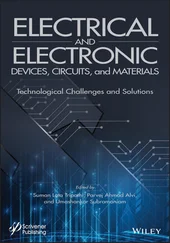1 Cover
2 Title Page
3 Copyright Page
4 List of Contributors
5 1 Introduction 1.1 Introduction 1.2 The Substrate 1.3 Nomenclatural Hype: ‘Bioactivity’, ‘Bioceramics’ 1.4 Chemical Interactions and Irrigation 1.5 Terminology 1.6 Classification of HSCs 1.7 Conclusion References
6 2 Pulp Capping Materials for the Maintenance of Pulp Vitality 2.1 Introduction 2.2 Maintaining Pulp Vitality 2.3 Clinical Procedures for Maintaining Pulp Vitality 2.4 Materials Used in Vital Pulp Treatment 2.5 Clinical Outcome and Practicalities 2.6 Conclusion References
7 3 Treatment of Immature Teeth with Pulp Necrosis 3.1 Introduction 3.2 Apexification and Root‐End Closure 3.3 Revitalization 3.4 Material Requirements 3.5 Healing Process and Cellular Responses 3.6 Future Directions: Tissue Engineering Approaches 3.7 Conclusion References
8 4 Endodontic Instruments and Canal Preparation Techniques 4.1 Classification and Components of Endodontic Instruments 4.2 Properties of NiTi Alloys and Improvements by Thermomechanical Treatments 4.3 Concepts in Root Canal Shaping 4.4 Conclusion References
9 5 Irrigating Solutions, Devices, and Techniques 5.1 Introduction 5.2 Irrigating Solutions 5.3 Irrigation Techniques 5.4 Final Remarks References
10 6 Root Canal Filling Materials and Techniques 6.1 Introduction 6.2 Root Canal Obturation Materials 6.3 Root Filling Techniques 6.4 Orifice Barrier Materials and Tooth Restoration 6.5 Retreatment 6.6 Conclusion References
11 7 Root‐End Filling and Perforation Repair Materials and Techniques 7.1 Introduction 7.2 The Surgical Environment 7.3 Materials for Endodontic Surgery 7.4 Conclusion Acknowledgements References
12 8 Materials and Clinical Techniques for Endodontic Therapy of Deciduous Teeth 8.1 Introduction 8.2 The Primary Dentine–Pulp Complex 8.3 Pulp Treatments in Deciduous Teeth 8.4 Conclusion References
13 9 Adhesion to Intraradicular and Coronal Dentine 9.1 Introduction 9.2 Adhesion to Human Dentine 9.3 Adhesion to Root Dentine in Vital Teeth 9.4 Pulp Protection Materials and Their Effect on Adhesion to Dentine 9.5 Adhesion to Root Dentine in Nonvital Teeth 9.6 Conclusion References
14 Index
15 End User License Agreement
1 Chapter 4Table 4.1 Classification of shaping and cleaning instruments, based on ISO 36...Table 4.2 Timeline of the development of different generations of root canal ...Table 4.3 Examples of current endodontic instruments: A, austenite; M, marten...Table 4.4 DSC characteristics of endodontic files on cooling.Table 4.5 DSC characteristics of endodontic files on heating.
2 Chapter 5Table 5.1 Medical needle specifications according to ISO 9626:1991/Amd.1:2001...
3 Chapter 7Table 7.1 Properties of ZOE‐based root‐end filling materials.Table 7.2 Classification of hydraulic cements based on their composition.Table 7.3 Proportions of phases detected in unreacted and set MTA and Portlan...Table 7.4 Leaching of calcium and bismuth form Portland cement and MTA over a...
4 Chapter 8Table 8.1 Advantages and disadvantages of various filling materials for the e...Table 8.2 Clinical and radiographic (Rx) outcomes of pulpotomy studies conduc...
1 Chapter 1 Figure 1.1 Fundamental classification of hydraulic silicate cements at the p...
2 Chapter 2 Figure 2.1 Schematic representation of the reparative process after pulp exp... Figure 2.2 Histological response to pulp capping. (a) Macrophotographic view... Figure 2.3 Intraoral photographs of an indirect pulp‐capping procedure. (a) ... Figure 2.4 Direct pulp capping. (a) Deep carious lesion extending to the pul... Figure 2.5 Partial pulpotomy. (a) Deep carious lesion extending to the pulp.... Figure 2.6 Full pulpotomy. (a) Deep carious lesion extending to the pulp. (b... Figure 2.7 Pulpectomy. (a) Deep carious lesion extending to the pulp, result... Figure 2.8 (a) Diagrammatic representation of dentine, including inorganic a... Figure 2.9 Discoloured maxillary left lateral incisor one year after a parti...
3 Chapter 3 Figure 3.1 MTA root‐end closure in a necrotic immature central incisor. (a) ... Figure 3.2 Revitalization in a necrotic immature central incisor. (a) Preope... Figure 3.3 Schematic of the processes of tertiary dentine formation. Reactio...Figure 3.4 Schematic representation showing the localization of stem cells r...
4 Chapter 4Figure 4.1 Ingle’s first standardization proposal.Figure 4.2 Standardization of endodontic instruments: sizing, numbering, and...Figure 4.3 Tip modification.Figure 4.4 Instrument components.Figure 4.5 Cores.Figure 4.6 Flute, edge, pitch, and helix angle.Figure 4.7 Radial land, rake, and cutting angles.Figure 4.8 Active tip (ProTaper Retreatment D1) and non‐active tip (ProTaper...Figure 4.9 K‐files.Figure 4.10 K‐reamer and H‐files.Figure 4.11 Flex‐R files (Miltex), with their rounded patented tips.Figure 4.12 Barbed broach, Gates Glidden drill, and Peeso drill.Figure 4.13 Dentsply Sirona/Maillefer systems.Figure 4.14 Sybron Endo/Kerr systems.Figure 4.15 FKG Race system.Figure 4.16 SAF system, XP Shaper, and XP Finishers.Figure 4.17 Parameter comparison between WaveOne and Reciproc: WOG Glider an...Figure 4.18 Irrisafe tip (Acteon) and ultrasonic endo tips: ProUltra (Dentsp...Figure 4.19 Transformation from austenite (A) to martensite (M) by temperatu...Figure 4.20 Martensitic transformation: 1) induced by temperature; 2) stress...Figure 4.21 Superelasticity.Figure 4.22 Detwinned or reorientated martensite.Figure 4.23 Transformation temperature ranges.Figure 4.24 Example of a NiTi alloy DSC diagram: orange, A ⇔ R; blue, R ⇔ M....Figure 4.25 DSC diagram of several endodontic instruments.Figure 4.26 Variation in nickel concentration close to a Ni 4Ti 3precipitate ...Figure 4.27 Bending curves of several endodontic instruments at 37 °C.Figure 4.28 (a) DSC results and (b) bending curves for ProTaper Universal, W...Figure 4.29 Impact of temperature on the bending behaviour of a ProTaper Nex...Figure 4.30 Standardized preparation. An apical is box is established 1–2 mm...Figure 4.31 Mechanism of internal transportation. If larger and stiffer inst...Figure 4.32 Mechanism of external transportation. As larger and stiffer inst...Figure 4.33 From left to right: sequences of events during plastic deformati...Figure 4.34 Step‐back preparation.Figure 4.35 Overzealous use of Gates Glidden drills predispose to furcal per...Figure 4.36 Envelope of motion of reamers in Schilder’s technique.Figure 4.37 Continuously tapered preparation.Figure 4.38 Kinematics of the balanced‐force technique.Figure 4.39 Crown‐down technique applied to NiTi rotary instrumentation. Lar...Figure 4.40 Modification of the flute’s pitch and helical angle from the Pro...Figure 4.41 Distinctive tapers along the active parts of different instrumen...Figure 4.42 Cross‐sections and maximal flute diameters (MFDs) of different f...Figure 4.43 Accumulation of debris in the flutes of ProTaper instruments acc...Figure 4.44 Pre‐ and post‐instrumentation microCT reconstructions of canals,...Figure 4.45 Evolution of cross‐section designs over the years. Top: 1990s – ...Figure 4.46 Different presentations of off‐centred cross‐section designs.Figure 4.47 Example of an instrument with variable cross‐sections along its ...
5 Chapter 5Figure 5.1 Scanning electron microscope photograph of a 24‐hour bacterial bi...Figure 5.2 Dentinal tubules contaminated with Enterococcus faecalis after tr...Figure 5.3 Scanning electron microscope photograph of a contaminated smear l...Figure 5.4 Syringes used for root canal irrigation. From top to bottom: 20, ...Figure 5.5 Various types of 30G stainless‐steel needles used for root canal ...Figure 5.6 Flexible 30G double side‐vented Irriflex needle made of plastic....Figure 5.7 Time‐averaged contours (left) and vectors (right) of irrigant vel...Figure 5.8 Time‐averaged irrigant velocity contours (left) and vectors (midd...Figure 5.9 Cannulas used for negative pressure irrigation: (a) 30G closed‐en...Figure 5.10 Ultrasonic instruments commonly used for irrigant activation: (a...Figure 5.11 Disinfection of the apical third of the main root canal and isth...Figure 5.12 (a) EndoActivator (Dentsply Sirona, Charlotte, NC, USA), with it...Figure 5.13 (a) Er:YAG laser (LightWalker ST‐E; Fotona, Ljubljana, Slovenia)...Figure 5.14 Manual dynamic agitation by a well‐fitting gutta‐percha point....Figure 5.15 ProUltra PiezoFlow ultrasonic needle (Dentsply Sirona, Charlotte...
Читать дальше












